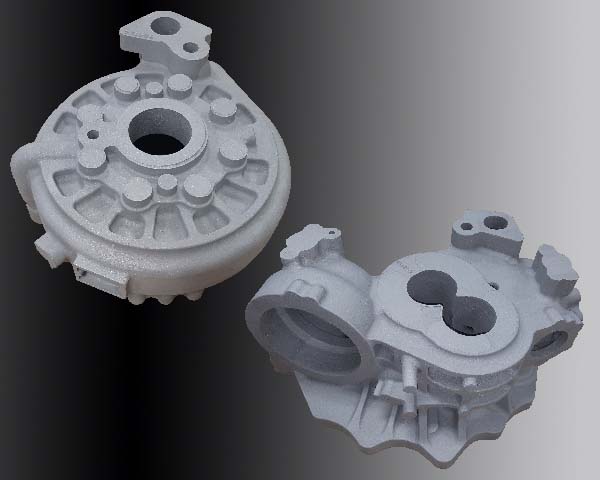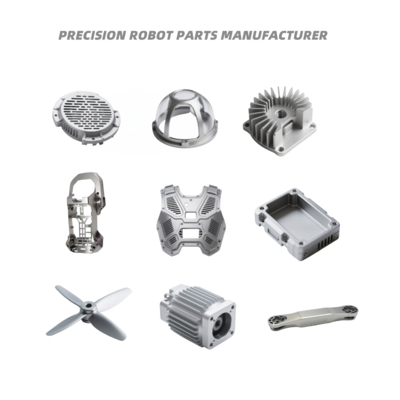Checking Out the Cutting-edge Processes Behind Modern Aluminum Foundry Workflow
Modern light weight aluminum foundry procedures are undergoing significant transformation. Automation and AI are improving production techniques, enhancing both performance and precision. The integration of 3D printing is improving mold development, while sustainability techniques are ending up being more vital. Each of these developments plays a vital function in redefining the sector. Nonetheless, the ramifications of these changes prolong past plain production efficiency. What possibilities and obstacles lie in advance for light weight aluminum factories in this progressing landscape?
The Function of Automation in Aluminum Foundries

Automation adds to boosted security criteria within the foundry environment. By moving dangerous jobs to devices, human workers can concentrate on managerial duties and top quality control, decreasing the danger of accidents. In addition, data analytics originated from automated procedures give useful understandings right into functional efficiency, bring about far better decision-making and constant improvement. As the need for aluminum products grows, the fostering of automation technologies will likely expand, additionally transforming the landscape of light weight aluminum shop procedures.
Innovations in Casting Technologies
Current advancements in casting technologies are changing aluminum factory procedures. Technologies such as 3D printing integration, advanced alloy formulations, and automated procedure optimization are improving effectiveness and item quality. These developments are pivotal in satisfying the advancing needs of the sector.
3D Printing Integration
Integrating 3D printing technology right into light weight aluminum foundry operations has reinvented conventional spreading approaches, enhancing both performance and accuracy. This innovative approach permits the fast manufacturing of complicated molds and cores, considerably decreasing lead times and product waste. By using additive manufacturing, factories can create elaborate geometries that were difficult or formerly challenging to accomplish with traditional strategies. The flexibility of 3D printing likewise allows fast layout modifications, promoting a much more active production procedure. In enhancement, this assimilation supports making use of lightweight frameworks, which is progressively vital in markets such as automobile and aerospace. As light weight aluminum foundries continue to embrace 3D printing, they position themselves at the center of technical advancement, driving renovations in product top quality and operational capabilities.
Advanced Alloy Formulations
The advancement of innovative alloy formulas has substantially enhanced spreading innovations in light weight aluminum foundry operations. These solutions integrate various components, such as magnesium, copper, and silicon, to improve mechanical homes and thermal resistance. By tailoring the composition of light weight aluminum alloys, producers can achieve particular efficiency characteristics that fulfill the demands of diverse applications, from vehicle elements to aerospace frameworks. Making use of innovative alloys likewise adds to reduced weight and enhanced toughness, which are important consider modern-day design. Additionally, technologies in alloy growth allow far better fluidity throughout casting, causing enhanced surface area finishes and lowered problems. On the whole, progressed alloy formulas stand for a considerable jump ahead, placing light weight aluminum foundries to meet the progressing needs of various markets effectively.
Automated Process Optimization
Developments in casting technologies have led the way for automatic process improvement in aluminum shop procedures. By integrating advanced software application and real-time information analytics, foundries can currently enhance manufacturing processes and improve quality assurance. Automated systems check variables such as stress, temperature level, and cooling rates, enabling for immediate modifications that lessen defects and waste. In addition, artificial intelligence formulas examine historical performance data to anticipate excellent setups, thus enhancing performance and minimizing cycle times. Robotics likewise play a substantial role, taking care of recurring jobs that boost safety and precision. In general, these technologies not just drive functional efficiency however also allow shops to meet the growing demand for top notch aluminum parts in different sectors.
Smart Manufacturing and Industry 4.0 Assimilation
The integration of Smart Manufacturing and Sector 4.0 within aluminum factories is transforming functional performance. By leveraging IoT technologies, automation, and robotics, factories can enhance production procedures and reduce downtime. In addition, information analytics offers essential understandings that enhance decision-making and drive constant renovation.
IoT in Foundry Workflow
As suppliers increasingly accept the Internet of Points (IoT), shop operations are experiencing a transformative change in the direction of wise production and Industry 4.0 combination. Aluminum Casting Company. IoT modern technologies make it possible for real-time information collection and evaluation, improving decision-making processes and operational effectiveness. Sensors and linked gadgets keep track of equipment efficiency, material use, and environmental conditions, permitting positive maintenance and resource optimization. This connection cultivates a more agile production setting, where modifications can be made quickly in reaction to market demands. In addition, IoT facilitates enhanced traceability and top quality control, as data from the whole manufacturing cycle can be conveniently accessed and analyzed. In general, the combination of IoT in factory procedures considerably boosts efficiency and drives development in aluminum manufacturing processes
Automation and Robotics Assimilation
Automation and robotics combination is transforming light weight aluminum shop procedures by improving efficiency and precision. This transformative approach improves procedures such as molding, putting, and ending up, lowering human error and enhancing output uniformity. By utilizing advanced robotic systems, shops can attain greater production prices while preserving stringent top quality criteria. Automated systems also make it possible for real-time surveillance and adaptive control, permitting swift modifications to manufacturing specifications. Furthermore, the assimilation of robotics minimizes labor costs and alleviates security risks associated with hands-on handling of molten steel. As factories embrace wise production concepts fundamental in Sector 4.0, the synergy in between automation and robotics solidifies their affordable edge, leading the way for sustainable growth and innovation in the light weight aluminum casting field.
Information Analytics for Efficiency
Harnessing data analytics substantially boosts effectiveness within aluminum factory procedures, aligning with smart production and Market 4.0 principles. By leveraging real-time data collection and evaluation, foundries can check manufacturing procedures, anticipate tools failures, and optimize resource allotment. This data-driven method helps with informative decision-making, enabling supervisors to improve and recognize traffic jams process. In addition, anticipating analytics equips foundries to anticipate market demands, therefore minimizing waste and making certain timely item shipment. Combination of information analytics with IoT gadgets boosts functional presence, fostering an aggressive upkeep culture. Eventually, implementing these advanced analytical strategies not just boosts performance but additionally drives development, positioning light weight aluminum foundries to satisfy the evolving demands of the industry while keeping affordable edges in a rapidly changing landscape.
Lasting Practices in Aluminum Spreading
While the aluminum spreading market has traditionally encountered environmental obstacles, numerous shops are now adopting sustainable practices to alleviate their effect (Aluminum Foundry). A substantial focus has been on recycling aluminum scrap, which not only minimizes waste yet also conserves energy contrasted to key light weight aluminum manufacturing. Cutting-edge melting modern technologies, such as induction heating systems, boost energy effectiveness and lower greenhouse gas emissions
In addition, shops are carrying out closed-loop water systems to lessen water usage and reduce thermal pollution. Using eco-friendly binders in mold-making procedures is getting grip, more reducing harmful discharges.
Moreover, some centers are spending in eco-friendly power resources to power procedures, aligning with global sustainability objectives. By integrating these methods, the aluminum casting market is advancing toward a more eco accountable future, showing that economic growth can exist together with environmental stewardship - Precision aluminum casting. These efforts reflect a dedication to sustainability and the value of environmental liability in manufacturing
Quality Control Innovations
As the light weight aluminum spreading market advancements towards sustainability, the value of top quality control developments becomes significantly noticeable. Modern aluminum factories are embracing innovative innovations to enhance their quality guarantee processes. Techniques such as real-time surveillance and data analytics permit manufacturers to detect issues and variances early in the production cycle. Implementing automatic evaluation systems furnished with machine finding out algorithms assurances that products fulfill rigid top quality requirements while lessening human error.
The combination of non-destructive testing approaches, such as ultrasonic and radiographic assessments, provides much deeper insights into the stability of castings without harming the material. These technologies not only visit homepage boost item reliability yet likewise minimize waste, straightening with sustainability objectives. In addition, the fostering of standardized high quality frameworks helps streamline procedures across different shops, guaranteeing consistency in output. Jointly, these innovations are improving high quality control, promoting a culture of excellence within the aluminum spreading field.
Future Patterns in Light Weight Aluminum Shop Workflow
What innovations lie ahead for light weight aluminum foundry operations? The future of light weight aluminum foundries is poised for change through improvements in automation, expert system, and lasting methods. The integration of robotics and automated systems is expected to improve effectiveness and accuracy in the spreading processes, minimizing human error and labor prices. In addition, AI-driven analytics will reference certainly enable real-time monitoring and predictive upkeep, optimizing functional efficiency and reducing downtime.
Sustainability stays a prime focus, with factories significantly taking on eco-friendly techniques, such as making use of recycled light weight aluminum and establishing low-emission melting technologies. Developments in 3D printing are also expected to revolutionize mold-making, permitting complicated geometries and decreased product waste. As the sector welcomes digitalization, data-driven decision-making will certainly end up being essential, making it possible for foundries to respond promptly to market demands. Collectively, these patterns guarantee to redefine aluminum factory operations, making them extra reliable, sustainable, and versatile to future challenges.

Frequently Asked Concerns
What Precaution Are Implemented in Aluminum Shop Operations?
Light weight aluminum foundry operations apply numerous precaution, consisting of individual protective tools, air flow systems to manage fumes, routine safety and security training, emergency situation feedback plans, and rigid surveillance of temperature and equipment to stop mishaps and assurance worker security.
Just How Do Shops Handle Workforce Educating for New Technologies?

What Products Are Generally Recycled in Light Weight Aluminum Foundries?
Aluminum factories typically recycle scrap light weight aluminum, including post-consumer products like beverage containers, automobile components, and construction products. This recycling process reduces waste and saves resources, adding to a much more lasting aluminum production market.
How Does Light Weight Aluminum Spreading Effect the Atmosphere?
Light weight aluminum casting impacts the atmosphere via energy-intensive processes, greenhouse gas emissions, and possible local pollution. Nonetheless, developments in recycling and lasting techniques can alleviate these impacts, promoting an extra environment-friendly technique to light weight aluminum production.
What Are the Typical Lead Times for Light Weight Aluminum Spreading Projects?
Regular lead times for light weight aluminum casting projects differ considerably, typically varying from two to 6 weeks. Factors influencing these timelines consist of intricacy, order size, and product availability, influencing overall production schedules in factory procedures.
Automation significantly plays a crucial role in light weight aluminum factories, improving effectiveness and accuracy in the manufacturing process. Advancements in casting innovations have paved the method for automated procedure enhancement in light weight aluminum factory procedures. Taking advantage of information analytics substantially boosts performance within light weight aluminum factory procedures, lining up with click for more smart production and Industry 4.0 concepts. A substantial emphasis has actually been on reusing light weight aluminum scrap, which not just minimizes waste yet also preserves energy compared to primary aluminum production. Aluminum factories typically reuse scrap light weight aluminum, including post-consumer products like beverage cans, vehicle parts, and construction products.